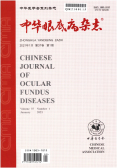摘要黄斑区是形成空间视力和色觉的关键解剖结构,黄斑疾病严重威胁患者的视觉功能及生活质量。非人灵长类动物(NHP)是唯一拥有类似人类黄斑结构的哺乳动物,因此在研究黄斑疾病方面具有重要价值。目前,多种方法包括自发性、基因编辑、药物诱导、光诱导及机械性损伤等,可用于筛选和构建NHP模型,用于研究眼皮肤白化病、全色盲、视网膜色素变性、老年性黄斑变性及一些罕见的眼部综合征。在构建NHP模型时,应充分考虑其他动物模型,以实现模型之间的互补研究。此外,应充分发挥NHP的资源优势,创建具有可控遗传背景的灵长类品系,有助于早日实现可持续利用的目标。
更多相关知识
abstractsThe macula is a critical anatomical structure for primates to acquire high-resolution spatial and color vision, with macula lesions posing a significant threat to patients' visual function and quality of life. Non-human primate (NHP) are the only mammals with a macular structure that is closest to that of humans, thus offering substantial value in the study of macular diseases. Currently, various methods, including spontaneous occurrence, gene editing, drug-induced, light-induced, and mechanical injury, can be employed to screen and establish NHP models for investigating conditions such as oculocutaneous albinism, achromatopsia, retinitis pigmentosa, age-related macular degeneration, and certain rare ocular syndromes. When constructing NHP models, due consideration should be given to other animal models to facilitate complementary research across different model systems. Additionally, leveraging the advantages of NHP and establishing genetically controlled NHP strains is a goal to strive for to achieve sustainable utilization of these resources in research.
More相关知识
- 浏览28
- 被引0
- 下载0


相似文献
- 中文期刊
- 外文期刊
- 学位论文
- 会议论文



 换一批
换一批 换一批
换一批



